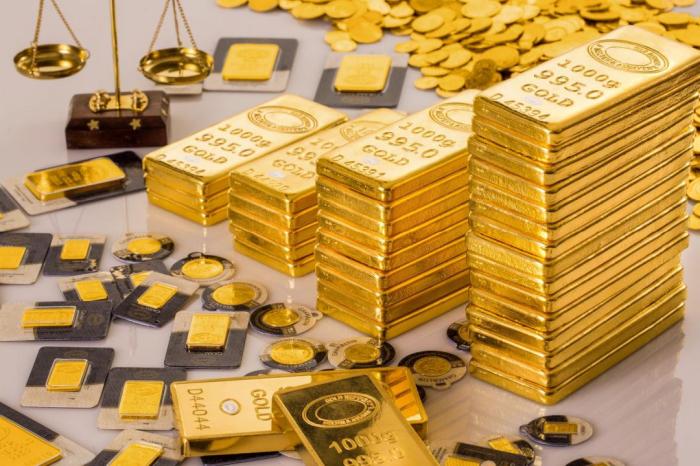Gold is a unique asset in the foreign exchange (forex) market. Its value often fluctuates based on various economic, political, and market factors. Understanding these influences can help traders make informed decisions. This article explores the key factors that drive the price of gold in forex trading.
Economic Indicators
Economic indicators play a crucial role in gold price movements. Key reports include GDP growth, unemployment rates, and inflation data. These indicators reflect the overall health of an economy.
When the economy is strong, investors may prefer stocks and bonds over gold. This reduces demand for gold, leading to lower prices. Conversely, during economic downturns, gold is often seen as a safe haven. Investors flock to it to protect their wealth, driving prices higher.
Inflation also significantly impacts gold prices. When inflation rises, the purchasing power of currency declines. Investors turn to gold as a hedge against inflation, increasing its demand and price. Conversely, low inflation can lead to decreased interest in gold.
Interest Rates
Interest rates are another critical factor influencing gold prices. Central banks set interest rates to control monetary policy. When rates rise, the opportunity cost of holding gold increases. Investors may prefer interest-bearing assets, leading to a drop in gold demand.
On the other hand, when interest rates are low, gold becomes more attractive. The lack of interest on cash holdings encourages investors to buy gold. This often results in rising gold prices. Therefore, changes in interest rates can have an immediate impact on the forex market.
Currency Strength
Gold is typically priced in U.S. dollars. Thus, the strength of the dollar directly affects gold prices. When the dollar strengthens, gold becomes more expensive for foreign buyers. This can reduce demand and lower gold prices.
Conversely, when the dollar weakens, gold becomes cheaper for foreign investors. This can lead to increased demand and higher prices. Therefore, the relationship between the dollar and gold is essential for forex traders to understand.
Geopolitical Events
Geopolitical events can significantly influence gold prices. Conflicts, tensions, and political instability often lead to increased demand for safe-haven assets like gold. Investors seek security during uncertain times, driving up prices.
For example, conflicts in the Middle East or tensions between major countries can lead to spikes in gold prices. Traders should stay informed about global events that may affect the market.
Supply and Demand Dynamics
The supply and demand for gold also play a critical role in its price movements. Gold is a finite resource, and mining costs can affect supply. If production costs rise, miners may reduce output. This can lead to a decrease in supply and higher prices.
On the demand side, jewelry, industry, and investment are the main drivers. In regions like India and China, demand for gold jewelry is high, especially during festivals and weddings. This seasonal demand can create price fluctuations.
Additionally, investment demand, such as buying gold ETFs, can also impact prices. Increased investment can lead to higher prices, while reduced interest can cause prices to fall.
Market Sentiment
Market sentiment plays a vital role in gold price movements. Traders’ perceptions of economic and geopolitical conditions can influence their buying and selling decisions. Positive sentiment towards the economy can lead to lower gold prices, while negative sentiment often results in higher prices.
Sentiment can be measured through various indicators, such as the Commitment of Traders (COT) report. This report shows the positions of traders in the futures market. Analyzing these positions can provide insights into market sentiment and potential price movements.
Technical Analysis
Technical analysis is a popular method for predicting gold price movements. Traders use charts and technical indicators to identify trends and patterns. These can include moving averages, RSI, and Fibonacci retracements.
Traders often look for support and resistance levels in gold prices. A strong support level may indicate a good buying opportunity, while resistance levels can signal potential selling points. Understanding these technical indicators can help traders make informed decisions.
Central Bank Policies
Central banks play a significant role in the gold market. Their policies regarding interest rates and monetary supply can influence gold prices. Central banks hold large reserves of gold, and their buying or selling activities can impact market dynamics.
When a central bank signals a shift in monetary policy, traders often react quickly. For example, if a central bank announces a reduction in interest rates, it may lead to increased gold buying. Traders need to monitor central bank actions and statements closely.
Global Economic Conditions
Global economic conditions affect gold prices as well. Economic growth in major economies, such as the U.S., China, and the Eurozone, can influence gold demand. Strong economic growth can lead to lower gold prices, while economic uncertainty can drive prices higher.
Additionally, trade tensions and economic policies can also impact global markets. For instance, trade disputes between major countries can lead to volatility. This uncertainty often boosts demand for gold as a safe haven.
The Role of Speculators
Speculators also influence gold prices in the forex market. Their trading strategies can create significant price movements. Many speculators use leverage to amplify their positions. This can lead to sharp price swings.
When speculators are bullish on gold, they may buy large quantities, driving prices higher. Conversely, if they become bearish, they may sell off their positions, leading to a decline in prices. Understanding the speculative nature of the market can help traders navigate price movements.
Conclusion
In conclusion, several factors drive gold prices in the forex market. Economic indicators, interest rates, currency strength, geopolitical events, supply and demand dynamics, market sentiment, technical analysis, central bank policies, global economic conditions, and the role of speculators all play a part.
Traders should stay informed about these influences to make sound investment decisions. By understanding the factors that impact gold prices, traders can better navigate the complexities of the forex market and enhance their trading strategies.
Related topics:

